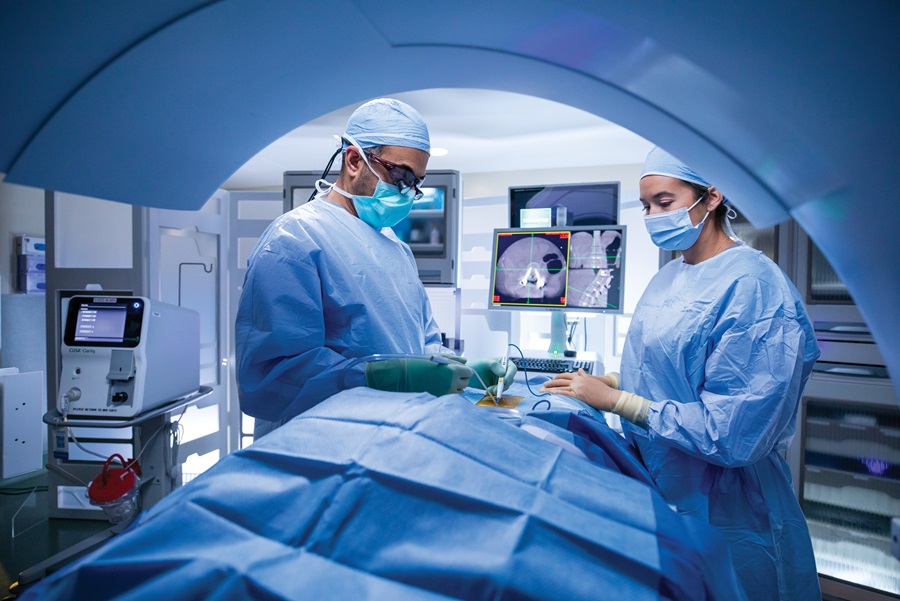Patient Success Stories with the Best Spine Surgeons in St Louis MO
Patient Success Stories with the Best Spine Surgeons in St Louis MO
Blog Article
A Summary of Back Conditions That Often Cause Surgical Therapies
When conventional therapies fall short to ease relentless signs,Back problems such as herniated discs, spine constriction, and degenerative disc illness frequently demand medical interventions. These problems not just bring about substantial discomfort however can likewise badly harm day-to-day performance and general top quality of life. Recognizing the subtleties of each condition and the matching surgical options, such as discectomy or spinal fusion, is important for efficient administration. As we check out these conditions further, it comes to be evident that the decision-making procedure surrounding surgical treatment is complex and warrants mindful factor to consider.
Herniated Discs
Although many people with herniated discs may locate alleviation through traditional treatments, surgery comes to be a needed consideration when signs and symptoms aggravate or persist - best spine surgeons in st louis mo. A herniated disc takes place when the soft inner gel of a back disc protrudes via its outer layer, possibly compressing neighboring nerves and leading to discomfort, tingling, or weakness in the extremities
Conventional management normally includes physical treatment, pain medications, and corticosteroid shots, which aim to reduce inflammation and boost function. Nonetheless, in cases where these approaches fail to relieve devastating symptoms, surgical alternatives may be checked out.
The most usual procedure for herniated discs is a discectomy, which includes the elimination of the herniated section of the disc to relieve pressure on the impacted nerve origin. In extra severe situations, back blend may be essential to maintain the impacted vertebrae.
People are encouraged to review the potential risks and advantages of surgical treatment with their doctor to make a notified choice. Eventually, the objective of any kind of medical intervention is to restore feature, ease pain, and improve total lifestyle for individuals suffering from herniated discs.
Spinal Stenosis
Spine constriction happens when the areas within the spinal column narrow, causing raised stress on the spine and nerves. This condition can develop in various regions of the back, consisting of the cervical and back areas, typically because of age-related changes, such as degenerative disc disease, joint inflammation, or enlarging of ligaments.
Clients with spinal constriction might provide with signs that include discomfort, feeling numb, prickling, or weakness, primarily in the legs or arms. These signs and symptoms can be aggravated by tasks that include standing or walking, often leading people to seek relief with conventional treatments like physical treatment, medicines, or epidural steroid injections.
Nonetheless, when these non-surgical treatments fall short to give sufficient relief, medical alternatives might be thought about. Common medical procedures for spinal constriction include laminectomy, which entails the removal of component of the vertebra to minimize pressure, and spine fusion, which supports the affected location. The choice to go after surgery is normally based on the extent of signs, the degree of functional problems, and the overall health and wellness of the client. Motivate diagnosis and administration are essential to stop additional neurological concession and improve high quality of life.
Spondylolisthesis
Spondylolisthesis occurs when one vertebra slips ahead over an additional, leading to misalignment of the spinal column. This problem can arise from numerous factors, including hereditary issues, injury, or degenerative changes in the spine. It is most frequently observed in the lumbar area, particularly at the L4-L5 and L5-S1 degrees.

Treatment options vary based on the extent of the slippage and the signs and symptoms offered. Traditional actions, consisting of physical treatment, pain management, and activity alteration, are usually the initial line advice of protection. Nevertheless, when non-surgical methods fail to alleviate signs or when considerable nerve compression is present, medical treatment might be warranted. Surgical options can consist of spine blend or decompression treatments, focused on restoring placement and alleviating neurological signs. Early medical diagnosis and appropriate management are essential for optimum results in people with spondylolisthesis.
Degenerative Disc Condition

The condition can be diagnosed with a combination of scientific examination, imaging researches, and client history. When these approaches stop working to provide adequate alleviation, surgical interventions might be taken into consideration.
Surgical options for DDD may include spine fusion or artificial disc substitute, aimed at maintaining the impacted segment and easing pain (best spine surgeons in st louis mo). Inevitably, the option of therapy is embellished, thinking about the intensity of the condition, individual health, and way of life factors
Spine Lumps

What factors contribute to the advancement of lumps within the spine, and how do they materialize in people? Spinal tumors can develop from get redirected here numerous elements, consisting of genetic predisposition, ecological impacts, and pre-existing clinical problems. They can be classified as primary tumors, coming from the spinal column, or additional lumps, which spread out from various other areas of the body. Patients may present with a series of signs, consisting of local discomfort, neurological deficiencies, weak point, or changes in bowel and bladder function, depending upon the growth's dimension and place.
Surgical treatment may be called for to reduce signs and symptoms, acquire a biopsy, or get rid of the tumor totally. The goal of surgical treatment is often to unwind neural components and stabilize the back. Early detection and intervention are critical for optimizing results in patients with spine lumps.
Conclusion
In summary, back conditions such as herniated discs, spine constriction, spondylolisthesis, degenerative disc disease, and spine lumps often demand surgical intervention because of their possible to create significant pain and practical problems. While conservative treatments may use temporary relief, surgical choices come to be critical when symptoms get worse or persist. Timely diagnosis and intervention play a critical role in restoring function and enhancing the quality of life for affected individuals, highlighting the importance of comprehensive back care.

Report this page